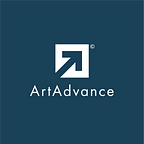What have you missed at Art Dubai 2022?
Art Dubai is the Middle East’s leading international art fair, held every March in Dubai, UAE. This year’s fair was bustling with both art and metaverse enthusiasts from around the world. The fair had three main sections: Modern, Contemporary, and Digital Art halls. The fair also hosted Global Art Forum 15: “This Is The Picture”: an opportunity for galleries, Web3 experts, and thinkers to share their work and thoughts on the latest art and social trends in Web3, Metaverse, and NFT art.
So what have you missed this year?
- Bybit exposition and Bybit X Hologram
Have you ever wondered what art exhibitions would look like in 2042? The Bybit exhibition hall could come close to what you’d imagine. Bybit is a trading platform for cryptocurrencies and NFT, and one of the main exhibits was the life-size Bybit X NFT hologram that visitors could interact with and ask questions using a microphone.
2. Fingerprints DAO and Seed Capital
Seed Capital is a project, yet essentially — a sculpture that includes a living plant and which results in produced NFTs. Curious yet? At regular intervals (every 15 minutes for Art Dubai), the plant’s soil moisture and temperature are recorded by sensors and combined into a cryptographically signed data packet. Simply put, the NFTs tell us how the plant is doing right now. If the sensors record that the plant is doing well, the data packet can be used to mint a Certificate of Growth NFT by anyone who cares about the wellbeing of the plant at the time. However, if the sensor values are out of acceptable range, the smart contract rejects the data packet, and the number of possible NFTs minted is reduced to 1. The smart contract code is responsible for the visualization and unique gradient visual record of the NFT. Read a thorough description of the project on terra0 Medium.
3. Postmasters gallery and Gracelee Lawrence
The Postmasters Gallery exhibit hall was one of my personal favorites. Postmasters was founded in 1984 by Magda Sawon and Tamas Banovich in New York’s East Village. The gallery perfectly balanced the physical and digital worlds, allowing the crypto novice to connect with an embroidered kaleidoscopic version of an NFT artwork, glowing with movement and color right next to it. The NFT piece was created by LoVid, the artist duo of Tali Hinkis and Kyle Lapidus (NY) who’ve been collaborating since 2001. LoVid’s work explores the juxtaposition of media and material, reality and metaverse, the importance of touch and connection.
I smile as I read:
“Leave it to two twentysomethings from Eastern Europe to found what would become one of the most forward-looking American galleries of the past 36 years. Passion for identifying what’s next is what keeps Postmasters at the forefront of culture today.” — artnet news, 2020 (from postmasters.com)
Particularly catching my eye were the artworks by Gracelee Lawrence, a U.S.-based artist who talks about the connection between food, the body, and technology. The skillfully crafted fruit sculptures spun conspicuously against a bright lime green background as if they were the main characters of the entire fair. Notice — what’re these fruits spinning on?
4. Global Art Forum 15: 'This Is The Picture'
Out of numerous insightful presentations and discussions about NFTs, the metaverse, and web3, I would single out the speech by an art journalist and curator Dorian Batycka. He delivered an interlude 'They Don't Know This Is A Meme'. He questioned what could memes tell us about the state of visual culture today, why the metaverse has been a part of our world much longer than we think, and how insight into the meme culture can offer an understanding of the early adopters of the art in the web3. He explored what kind of culture is created by the NFT market, how freedom, democracy, politics, or even kitsch are interconnected in the NFT art and web3. It was truly refreshing to witness academic thinkers entering a field so fresh and relatively intangible.
What do you think about the connection between the meme and the NFT cultures? Let's meet in the comment section.
By Kotryna Tribusinaite, 2022
©ArtAdvance
